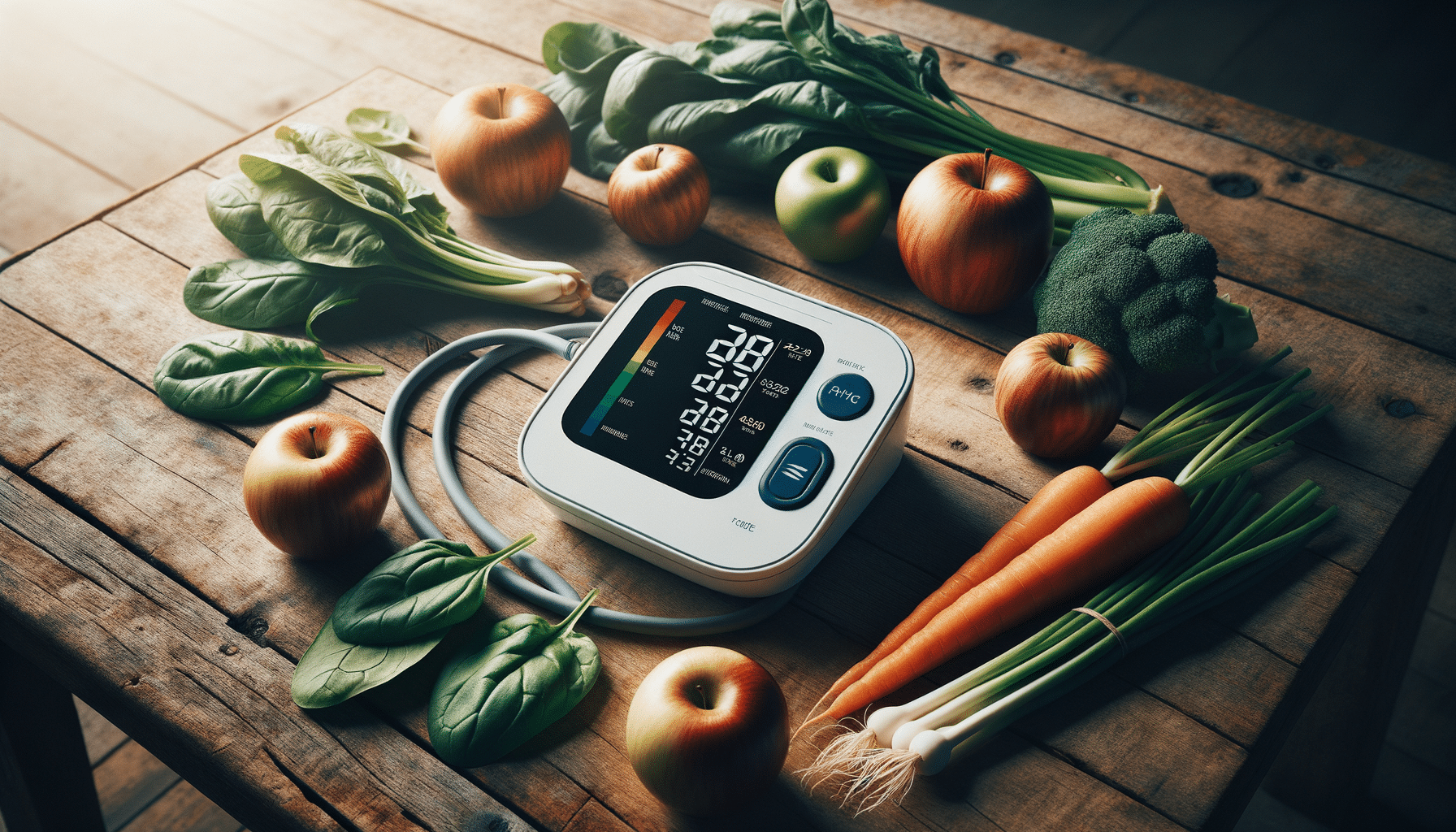
What to Know About High Blood Pressure
Understanding High Blood Pressure
High blood pressure, also known as hypertension, is a common health condition that affects millions of people worldwide. It occurs when the force of the blood against the walls of the arteries is consistently too high, which can lead to serious health problems over time. Understanding high blood pressure is crucial because it often goes unnoticed due to its lack of noticeable symptoms, earning it the nickname “the silent killer.”
Blood pressure is measured using two numbers: systolic and diastolic. The systolic number indicates the pressure in your arteries when your heart beats, while the diastolic number shows the pressure when your heart is at rest between beats. A normal blood pressure reading is generally considered to be around 120/80 mmHg. When the readings consistently exceed 140/90 mmHg, it is classified as high blood pressure.
Several factors can contribute to the development of high blood pressure. These include genetics, age, lifestyle choices, and underlying health conditions. For example, individuals with a family history of hypertension, those who are overweight, or those who consume excessive amounts of salt and alcohol are at a higher risk. Additionally, conditions such as diabetes and kidney disease can increase the likelihood of developing high blood pressure.
Recognizing the importance of managing blood pressure is vital for maintaining overall health. Uncontrolled high blood pressure can lead to severe complications, including heart disease, stroke, kidney damage, and vision loss. Therefore, regular monitoring and adopting a healthy lifestyle are essential steps in preventing and managing this condition.
Causes and Risk Factors
The causes of high blood pressure are multifaceted, involving a combination of genetic, environmental, and lifestyle factors. Understanding these causes can help individuals take proactive measures in managing their health.
Genetics play a significant role in determining an individual’s risk for high blood pressure. If a close relative, such as a parent or sibling, has hypertension, there is a higher likelihood of developing the condition. Age is another factor, as blood vessels naturally lose some of their elasticity over time, which can contribute to increased blood pressure.
Lifestyle choices are among the most influential risk factors. A diet high in sodium, saturated fats, and processed foods can lead to weight gain and increased blood pressure. Sedentary behavior, marked by a lack of physical activity, further exacerbates this risk. Moreover, excessive alcohol consumption and smoking can damage blood vessels and raise blood pressure levels.
In addition to these factors, certain medical conditions can increase the risk of hypertension. For instance, individuals with diabetes are more prone to developing high blood pressure due to the increased strain on their blood vessels. Similarly, kidney disease can interfere with the body’s ability to regulate blood pressure effectively.
Recognizing and addressing these risk factors is crucial for preventing high blood pressure and its associated complications. By making informed lifestyle changes and seeking appropriate medical advice, individuals can significantly reduce their risk and improve their overall well-being.
Symptoms and Complications
One of the challenges of high blood pressure is its asymptomatic nature, which means that many people are unaware they have it until it leads to more serious health issues. This lack of symptoms makes regular monitoring essential, especially for those with known risk factors.
While high blood pressure itself may not present noticeable symptoms, it can lead to several complications over time. These complications can affect various organs and systems in the body, highlighting the importance of early detection and management.
Cardiovascular complications are among the most common consequences of uncontrolled high blood pressure. The heart has to work harder to pump blood, which can lead to conditions such as heart disease, heart attacks, and heart failure. Additionally, high blood pressure can cause the arteries to harden and narrow, increasing the risk of atherosclerosis and subsequent cardiovascular events.
The brain is also vulnerable to the effects of high blood pressure. Persistent hypertension can damage blood vessels in the brain, increasing the risk of stroke and cognitive decline. In severe cases, it can lead to aneurysms, which are potentially life-threatening.
Other complications include kidney damage, as high blood pressure can impair the kidneys’ ability to filter waste from the blood effectively. This can lead to kidney disease and, in severe cases, kidney failure. Additionally, high blood pressure can affect vision by causing damage to the blood vessels in the eyes, potentially leading to vision loss.
Understanding these potential complications underscores the importance of regular blood pressure checks and proactive management strategies to mitigate the risks associated with high blood pressure.
Diagnosis and Monitoring
Diagnosing high blood pressure involves a straightforward process, yet it is essential for identifying the condition early and implementing appropriate management strategies. Regular monitoring is key to ensuring that blood pressure levels remain within a healthy range.
A diagnosis of high blood pressure is typically made through multiple blood pressure readings taken over time. This is because factors such as stress, physical activity, and even the time of day can influence blood pressure. A healthcare professional will consider these variables to determine whether a person has hypertension.
Blood pressure is measured using a device called a sphygmomanometer, which consists of an inflatable cuff and a pressure gauge. The cuff is placed around the upper arm and inflated to restrict blood flow. As the cuff deflates, the healthcare provider listens for specific sounds using a stethoscope to determine systolic and diastolic pressures.
For individuals diagnosed with high blood pressure, regular monitoring is crucial. This can be done at home using a home blood pressure monitor, which allows individuals to track their blood pressure levels in a familiar environment. Keeping a log of these readings can help both patients and healthcare providers assess the effectiveness of treatment plans.
In addition to regular monitoring, healthcare providers may recommend additional tests to identify any underlying causes or complications associated with high blood pressure. These tests may include blood tests, urine tests, and imaging studies to assess kidney function and detect any damage to the heart or blood vessels.
By understanding the process of diagnosis and the importance of regular monitoring, individuals can take proactive steps in managing their blood pressure and reducing the risk of associated complications.
Prevention and Management
Preventing and managing high blood pressure involves a combination of lifestyle changes, medical interventions, and regular monitoring. These strategies are essential for reducing the risk of complications and maintaining overall health.
Lifestyle modifications are a cornerstone of hypertension management. A balanced diet rich in fruits, vegetables, whole grains, and lean proteins can help control blood pressure levels. Reducing sodium intake is particularly important, as excessive salt consumption is a known contributor to high blood pressure.
Regular physical activity is another critical component of hypertension prevention and management. Engaging in activities such as walking, cycling, or swimming for at least 150 minutes per week can help lower blood pressure and improve cardiovascular health. Additionally, maintaining a healthy weight through diet and exercise can significantly reduce the risk of developing high blood pressure.
For individuals who smoke, quitting is imperative. Smoking damages blood vessels and raises blood pressure, increasing the risk of heart disease and stroke. Limiting alcohol consumption is also advised, as excessive drinking can contribute to hypertension.
In some cases, lifestyle changes alone may not be sufficient to control high blood pressure. In such instances, healthcare providers may prescribe medications to help manage the condition. These medications work in various ways, such as relaxing blood vessels, reducing fluid retention, or slowing the heart rate.
Regular follow-ups with healthcare providers are essential for monitoring blood pressure and adjusting treatment plans as needed. By combining lifestyle changes with medical interventions, individuals can effectively manage high blood pressure and improve their quality of life.


